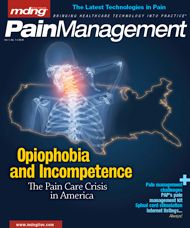Postherpetic Neuralgia (PHN)
//The Educated Patient®
Leaflets for Patients
These “Clinical Knowledge Summaries (formerly PRODIGY)” are made available by the UK’s NHS and provide “a reliable source of evidence-based information and practical ‘know-how’” to present to patients about PHN. These “leaflets” introduce patients to the symptoms, causes, and means of diagnosing the disease, as well as treatment methods and self-help strategies. The leaflets also cover trigeminal neuralgia.
Link Code: pm3122
Face Pain
This section of a guide on how to face pain for patients and caregivers from the UK’s Brain & Spine Foundation explains how the varicella virus causes PHN, who is susceptible to PHN, and what treatments are available for PHN. The entire booklet is downloadable as a PDF.
Link Code: pm3123
//Online CME
Herpes Zoster (Shingles) and Postherpetic Neuralgia
Credits: 1.00
Fee: Free with subscription; $15 without subscription or with complimentary or institutional subscription
Expiration Date: February 28, 2011
Multimedia: None
Based on an article published in the March 2009 issue of Mayo Clinic Proceedings, this CME activity covers “the common presentation of herpes zoster,” “summarizes appropriate treatment for herpes zoster and PHN,” and helps physicians to identify “patients for whom herpes zoster vaccine is appropriate.” The post-test comprises five multiple choice questions.
Link Code: pm3134
//Clinical Trials
JNJ-42160443 in Postherpetic Neuralgia and Post-traumatic Neuralgia
Study Type: Interventional
Age/Gender Requirements: 18-80 years (male/female)
Sponsor: Johnson & Johnson Pharmaceutical Research & Development, LLC
Purpose: Patients with PHN and post-traumatic neuralgia whose pain is not controlled with or without standard pain therapy will undergo subcutaneous injection of an experimental medication or placebo once every 28 days as part of a five phase study. The phases include: “a screening phase of up to 28 days, a treatment phase of 12 weeks, an optional extension phase of up to 40 weeks, an optional extension phase of up to 52 weeks, and a follow-up phase of 26 weeks after the last dose of study medication.”
Link Code: pm3163
//eAbstracts
Long-term Treatment of Neuropathic Pain with a 5% Lidocaine Medicated Plaster
Journal: European Journal of Anaesthesiology (December 10, 2009)
Authors: Wilhelm I, Tzabazis A, Likar R, et al.
Purpose: “This study examined the efficacy and tolerability of long-term treatment with the 5% lidocaine medicated plaster in patients with localized neuropathic pain conditions.” Researchers conducted a telephone interview of twenty patients who had been treated with medicated plaster for localized neuropathic pain at three and five year follow up intervals. “Questions were related to the efficacy, development of tolerance, tolerability, wear time and comfort of the plaster.”
Results: “At 3 years, 10 out of 20 (50%) initial responders were still using the plasters with no decline in analgesic efficacy. After 5 years, eight of the original 20 responders (40%) maintained treatment and continued to experience effective pain relief.” Of the 12 responders who discontinued treatment, none did so “because of inadequate analgesia or intolerable side effects.” The authors conclude that the therapy “provides sustained pain relief over long-term treatment in patients with neuropathic pain of various causes and is well tolerated.”
Link Code: pm3156
Evidence-based Case Report: The Prevention and Management of Postherpetic Neuralgia with Emphasis on Interventional Procedures
Journal: Regional Anesthesia and Pain Medicine (September/October 2009)
Authors: Benzon H, Chekka K, Darnule A, et al.
Purpose: After examining the case of a patient with PHN who “did not respond to medications, either singly or in combination, or to intrathecal methylprednisolone but responded to intrathecal alcohol,” researchers performed “a search of published English-language studies on the prevention and treatment of PHN.”
Results: Researchers concluded that, based on the literature, antiviral agents, anticonvulsants, antidepressants, opioids, and Lidoderm demonstrated greatest efficacy (level A evidence); “the role of epidural local anesthetic and steroid injections in preventing PHN has not been completely established (level B evidence);” and “intrathecal steroid injections and topical capsaicin may be effective in PHN (level B evidence).” Spinal cord stimulation and intrathecal alcohol should be viewed as modalities of last resort.
Link Code: pm3157
